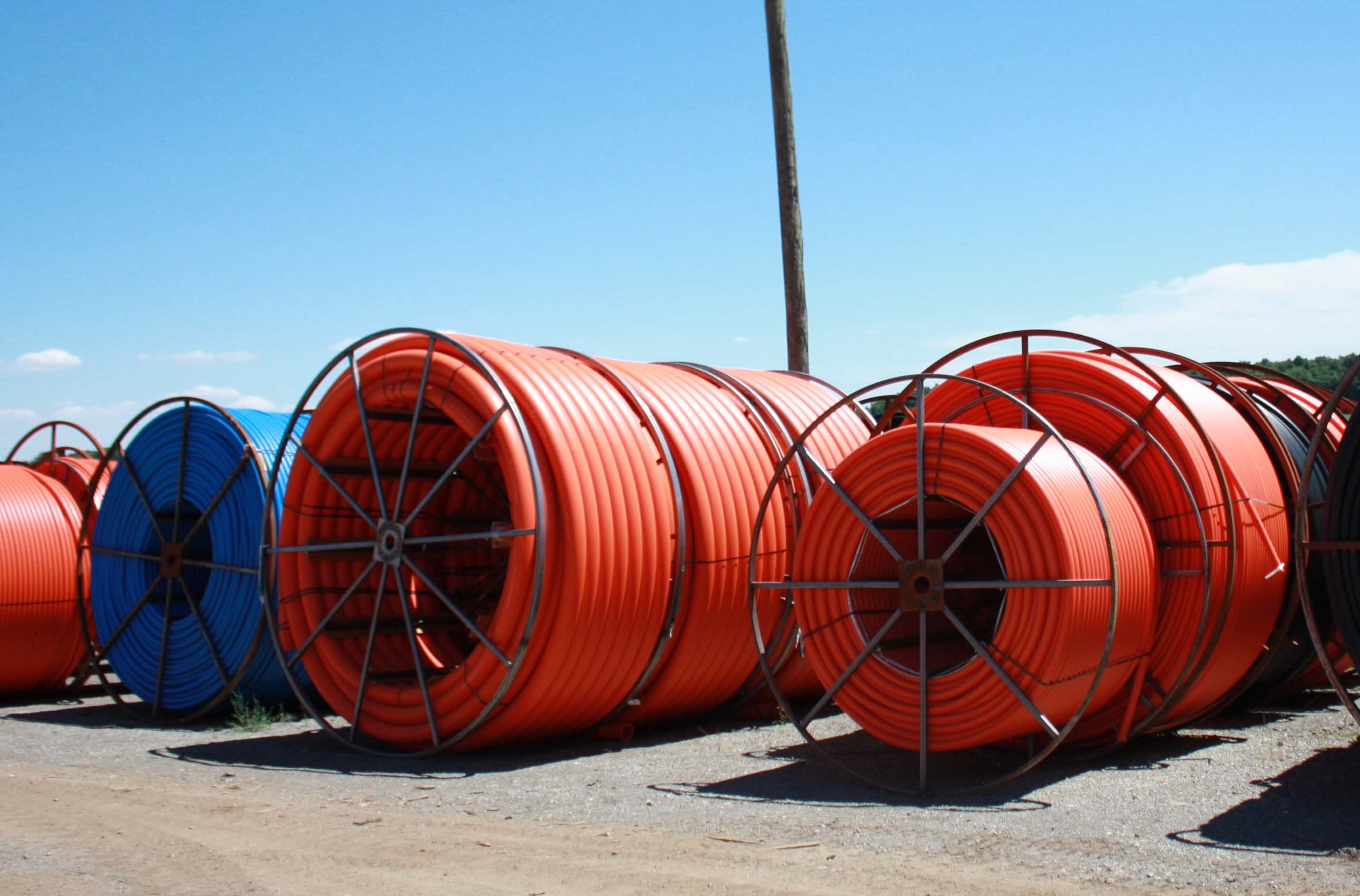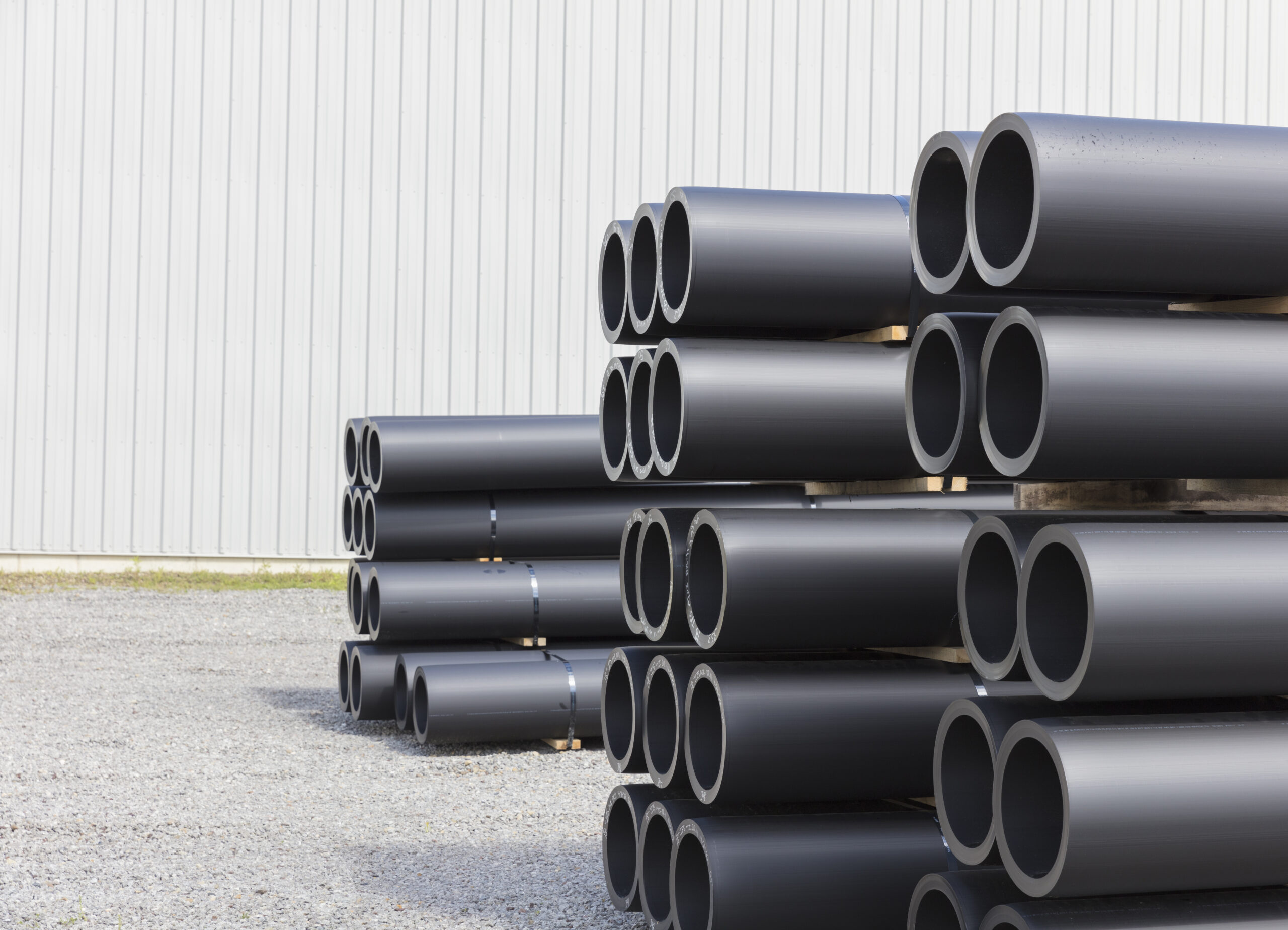Why Texas hdpe pipe manufacturer Is Leading in Advanced Pipe Solutions
Wiki Article
Explore the Production Refine Behind High-Quality HDPE Pipe and Its Applications
The production process of high-quality HDPE pipelines is complex and systematic. It begins with the choice of raw materials that improve performance. Following this, ethylene undergoes polymerization to create material, which is then shaped via extrusion. Quality control is paramount, making certain that the end product fulfills stringent criteria. Nevertheless, the trip of HDPE pipelines doesn't end with manufacturing. Their applications across different markets expose a wider value worth taking a look at.Comprehending HDPE: Characteristics and Advantages

High-density polyethylene (HDPE) is a flexible thermoplastic recognized for its longevity and resistance to different ecological aspects. This material shows outstanding tensile toughness, making it suitable for demanding applications. Its low-density framework contributes to a light-weight item, promoting convenience of handling and setup. HDPE additionally showcases exceptional resistance to chemicals, which minimizes destruction when subjected to harsh compounds.
The product's low moisture absorption even more boosts its longevity, making it excellent for use in pipes and tank. In addition, HDPE is resistant to ultraviolet (UV) radiation, making sure that products preserve their honesty even when subjected to sunshine. Its flexibility enables for the production of intricate shapes without endangering strength. The green nature of HDPE, typically stemmed from recycled materials, includes in its allure, advertising sustainable practices in manufacturing. Generally, these residential properties and benefits make HDPE a recommended selection for various commercial and customer applications.
Basic Material Selection for HDPE Production
The selection of basic materials for HDPE production is necessary to confirm the last product meets the wanted requirements and high quality standards. High-density polyethylene (HDPE) is mostly generated from polymerized ethylene, derived from nonrenewable fuel sources such as gas or unrefined oil. The top quality of these feedstocks substantially influences the mechanical and thermal properties of the last HDPE.Ingredients additionally play a considerable function in improving HDPE's performance, consisting of anti-oxidants, UV stabilizers, and colorants, which improve durability and resistance to environmental variables. The option procedure should think about not just the chemical structure of the raw products however also their processing qualities to assure effective production.
In addition, the sourcing of raw materials must focus on sustainability and conformity with environmental laws, as liable practices are vital in today's market. Ultimately, cautious resources choice lays the structure for creating premium HDPE pipelines appropriate for diverse applications.
The Extrusion Process: Forming HDPE Pipeline
The extrusion process plays an important duty fit HDPE pipelines, beginning with careful product preparation methods that ensure perfect circulation and consistency. Similarly crucial is the style of the die, which directly influences the last dimensions and surface high quality of the pipe. Together, these variables contribute substantially to the efficiency and quality of HDPE pipeline production.Material Prep Work Strategies
Reliable production of HDPE pipelines begins with precise product prep work strategies, especially the extrusion procedure. Throughout this stage, high-density polyethylene material is first dried out to eliminate wetness, making certain excellent circulation qualities. The material is then fed into the extruder, where it undergoes heating and melting, changing right into a viscous state. This heating process is meticulously controlled to maintain the material's stability and efficiency. The liquified HDPE is compelled via a die, forming it right into a continual pipe form. Proper temperature level monitoring throughout extrusion is crucial, as it straight affects the material's buildings and the final product high quality. When shaped, the HDPE pipe is cooled down and reduced to specified lengths, ready for subsequent handling and applications.Die Layout Relevance
Accuracy in die layout plays a crucial role in the extrusion procedure of HDPE pipelines. The die offers as the last shaping device, straight affecting the pipe's dimensions, wall density, and surface area coating. A properly designed die warranties consistent material flow, minimizing flaws such as abnormalities and vulnerable points. The geometry of the die should be maximized to suit the details residential properties of HDPE, including its thickness and thermal behavior throughout extrusion. Additionally, the cooling rate of the product as it passes with the die can markedly influence the pipeline's structural integrity. Spending in advanced die modern technology is crucial for manufacturers intending to create high-grade HDPE pipelines that satisfy industry criteria and consumer expectations.Quality Assurance Actions in HDPE Production
Although numerous factors affect the high quality of HDPE pipe manufacturing, reliable quality control actions are vital to guarantee consistency and integrity in the final item. Secret quality assurance methods consist of strenuous material hdpe pipe fittings Midland TX assessment, confirming that the raw polyethylene satisfies well established criteria for purity and density. Throughout the extrusion process, specifications such as temperature level, stress, and cooling time are very closely monitored to keep dimensional accuracy and structural honestyFurthermore, post-production screening is essential; manufacturers frequently carry out hydrostatic tests to examine the pipe's strength and resistance to pressure. Aesthetic inspections for surface defects additionally improve top quality assurance. Accreditation from appropriate requirements organizations, like ASTM or ISO, offers an additional layer of integrity. By carrying out these complete quality control procedures, suppliers can reduce defects, boost efficiency, and ensure that the HDPE pipelines fulfill the certain demands of different applications, eventually causing client fulfillment and depend on in the product.
Applications of HDPE Pipeline Throughout Industries
HDPE pipelines are utilized throughout different industries due to their toughness and convenience. In water distribution systems, they guarantee reliable distribution, while in wastewater administration, they offer trustworthy services for waste transport. In addition, farming watering networks gain from HDPE's resistance to corrosion and versatility, making it a suitable option for contemporary farming practices.
Water Distribution Solutions
A substantial variety of sectors depend on high-density polyethylene (HDPE) pipelines for effective water distribution systems. Understood for their toughness and resistance to rust, HDPE pipelines are commonly used in municipal water supply networks, agricultural irrigation, and commercial applications. Their light-weight nature assists in very easy handling and installment, minimizing labor expenses and time. Furthermore, HDPE pipes can fit different pressure levels, making them ideal for both reduced and high-pressure systems. American Plastics HDPE Pipe for Oilfield. The versatility of the product enables for seamless assimilation right into existing facilities, minimizing the need for comprehensive excavation. In addition, HDPE's resistance to chemical seeping assurances that the water provided remains secure and clean, making it an optimal choice for maintaining the top quality of drinkable water across numerous industriesWastewater Administration Solutions
Effective water distribution systems also lead the method for ingenious wastewater monitoring options, where high-density polyethylene (HDPE) pipelines play a significant role. Distinguished for their durability and resistance to rust, HDPE pipelines are ideal for transferring wastewater in different settings. Their versatility enables simple installation in complicated settings, reducing the demand for comprehensive excavation. Furthermore, HDPE's smooth interior surface reduces friction, enhancing flow rates and performance. These pipelines are additionally immune to chemical leaching, making sure that impurities do not endanger the surrounding atmosphere. Industries, communities, and treatment facilities significantly depend on HDPE pipes for their dependability and durability, making them a favored option for modern wastewater management systems. This adaptability emphasizes the essential relevance of HDPE pipes throughout various applications.Agricultural Irrigation Networks
Agricultural watering networks benefit greatly from using high-density polyethylene (HDPE) pipes, which offer reliable and trusted water distribution to crops. HDPE pipelines are light-weight, making them simple to transfer and mount, while their versatility enables numerous setups in diverse surfaces. These pipes show exceptional resistance to corrosion, chemicals, and UV radiation, making certain durability in rough agricultural settings. Furthermore, their smooth indoor surface minimizes rubbing loss, optimizing water circulation and decreasing power costs related to pumping. The durability of HDPE pipelines, commonly exceeding 50 years, adds to lower upkeep and replacement costs. Farmers increasingly count on HDPE pipes to enhance irrigation effectiveness and advertise sustainable agricultural techniques, ultimately leading to improved crop returns and source preservation.
Future Patterns in HDPE Pipe Innovation
As the need for lasting and efficient infrastructure expands, innovations in HDPE pipeline technology are positioned to change different industries. Emerging trends consist of the combination of smart modern technologies, such as sensors and IoT abilities, which help with real-time monitoring of pipe problems, minimizing maintenance expenses and protecting against leakages. Furthermore, the development of innovative manufacturing strategies, such as 3D printing, is allowing the production of complex, personalized pipeline styles that satisfy specific job needs.Moreover, the concentrate on recycling and round economic climate practices is driving the advancement of HDPE pipes made from recycled products, enhancing sustainability. Boosted jointing methods, such as electro-fusion and mechanical fittings, are likewise boosting installation performance and dependability. Finally, the growing emphasis on ecological guidelines is pushing suppliers to adopt greener production processes, making sure that HDPE pipelines not only satisfy market criteria yet additionally foster a more sustainable future for facilities growth.
Frequently Asked Questions
How Does HDPE Contrast to Various Other Plastic Products?
HDPE exceeds lots of various other plastic materials regarding sturdiness, chemical resistance, and versatility. Its low thickness and high tensile stamina make it excellent for various applications, typically surpassing choices in both efficiency and long life.What Are the Ecological Effects of HDPE Production?
The ecological effects of HDPE manufacturing consist of greenhouse gas discharges, energy intake, and prospective pollution from manufacturing procedures. Furthermore, improper disposal can cause dirt and water contamination, raising concerns regarding long-term eco-friendly results.Can HDPE Pipeline Be Recycled?
Yes, HDPE pipelines can be recycled. Several centers accept utilized HDPE for processing, changing it right into new items. This reusing contributes to sustainability initiatives, lowering plastic waste while saving resources and power in the manufacturing cycle.What Is the Life-span of HDPE Water Lines?

Just How Do Temperature Level Variations Affect HDPE Pipe Efficiency?
Temperature level variations substantially influence HDPE pipeline efficiency, influencing flexibility and stamina. High temperature levels can bring about softening, while low temperature levels may cause brittleness, ultimately affecting the pipe's resilience and viability for different applications in diverse atmospheres.Report this wiki page